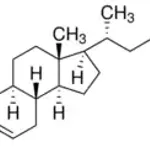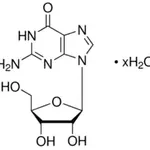
Merck (2-Hydroxypropyl)-β-cyclodextrin
✨AI 추천 연관 상품
AI가 분석한 이 상품과 연관된 추천 상품들을 확인해보세요
연관 상품을 찾고 있습니다...
(2-Hydroxypropyl)-β-cyclodextrin
powder, BioReagent, suitable for cell culture
생물학적 소스
corn starch
Quality Level
제품 라인
BioReagent
form
powder
분자량
1396 Da
라벨링 범위
4-10 (determined by NMR)
technique(s)
cell culture | mammalian: suitable
solubility
H2O: 100 mg/mL
배송 상태
ambient
저장 온도
room temp
SMILES string
CC(O)COCC1OC2OC3C(COCC(C)O)OC(OC4C(COCC(C)O)OC(OC5C(COCC(C)O)OC(OC6C(COCC(C)O)OC(OC7C(COCC(C)O)OC(OC8C(COCC(C)O)OC(OC1C(OCC(C)O)C2OCC(C)O)C(OCC(C)O)C8OCC(C)O)C(OCC(C)O)C7OCC(C)O)C(OCC(C)O)C6OCC(C)O)C(OCC(C)O)C5OCC(C)O)C(OCC(C)O)C4OCC(C)O)C(OCC(C)O)C3OCC(C)O
InChI
1S/C63H112O42/c1-22(64)8-85-15-29-50-36(71)43(78)57(92-29)100-51-30(16-86-9-23(2)65)94-59(45(80)38(51)73)102-53-32(18-88-11-25(4)67)96-61(47(82)40(53)75)104-55-34(20-90-13-27(6)69)98-63(49(84)42(55)77)105-56-35(21-91-14-28(7)70)97-62(48(83)41(56)76)103-54-33(19-89-12-26(5)68)95-60(46(81)39(54)74)101-52-31(17-87-10-24(3)66)93-58(99-50)44(79)37(52)72/h22-84H,8-21H2,1-7H3/t22?,23?,24?,25?,26?,27?,28?,29-,30-,31?,32?,33?,34?,35?,36?,37-,38?,39-,40+,41+,42+,43?,44+,45?,46+,47+,48+,49+,50+,51+,52-,53-,54-,55-,56-,57+,58-,59+,60-,61-,62-,63-/m1/s1
InChI key
ODLHGICHYURWBS-RYJYQAAZSA-N
Cyclodextrins are cyclic oligosaccharides consisting of 6, 7, or 8 glucopyranose units, usually referred to as α-, β-, or γ-cyclodextrins, respectively. These compounds have rigid doughnut-shaped structures making them natural complexing agents. The unique structures of these compounds owe their stability to intramolecular hydrogen bonding between the C2- and C3-hydroxyl groups of neighboring glucopyranose units. The molecule takes on the shape of a torus with the C2- and C3-hydroxyls located around the larger opening and the more reactive C6-hydroxyl aligned around the smaller opening. The arrangement of C6-hydroxyls opposite the hydrogen bonded C2- and C3-hydroxyls forces the oxygen bonds into close proximity within the cavity, leading to an electron rich, hydrophobic interior. The size of this hydrophobic cavity is a function of the number of glucopyranose units forming the cyclodextrin.
The solubility of natural cyclodextrins is very poor. In the late 1960′s, it was discovered that chemical substitutions at the 2, 3, and 6 hydroxyl sites would greatly increase solubility. Most chemically modified cyclodextrins are able to achieve a 50% (w/v) concentration in water.
Cavity size is the major determinant as to which cyclodextrin is used in complexation. The cavity diameter of β-cyclodextrins or β-glucopyranose unit compounds is well-suited for use with molecules the size of hormones, vitamins and many compounds frequently used in tissue and cell culture applications. For this reason, β-cyclodextrin is most commonly used as a complexing agent.
배송/결제/교환/반품 안내
배송 정보
| 기본 배송비 |
| 교환/반품 배송비 |
|
|---|---|---|---|
| 착불 배송비 |
| ||
| 교환/반품 배송비 |
| ||
결제 및 환불 안내
| 결제수단 |
|
|---|---|
| 취소 |
|
| 반품 |
|
| 환급 |
|
교환 및 반품 접수
| 교환 및 반품 접수 기한 |
|
|---|---|
| 교환 및 반품 접수가 가능한 경우 |
|
| 교환 및 반품 접수가 불가능한 경우 |
|
교환 및 반품 신청
| 교환 절차 |
|
|---|---|
| 반품 절차 |
|





